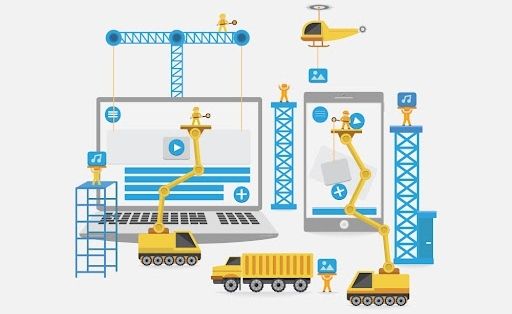The construction industry is undergoing a revolution. New technologies are upending the way we build, from smart cities and data-driven infrastructure to virtual reality and additive manufacturing.
All these innovations have one thing in common: they’re changing how we design, construct, operate and maintain our built environment-and that means ample opportunities for manufacturers of everything from steel beams to software applications.
In this article, you will learn about how some of the most disruptive technology trends are reshaping the construction industry today. It will include an overview of what makes each trend so powerful.

Contents
Artificial Intelligence, Robotics & 3D Printing Are Changing Building Design And Management.
Artificial intelligence in construction:
AI has been around since the 1950s but only recently started making its mark in building management. IBM initially developed AI to automate repetitive tasks such as routing mail through postal systems. However, researchers realized that AI could be used to automate more complex processes like planning and scheduling projects over time.
Today, many large organizations use AI tools to manage their entire project portfolio. For example, Google uses machine learning algorithms to predict demand for office space across different regions. This allows them to plan future expansions accordingly.
Similarly, BIM can help architects create detailed models of buildings before construction begins. These models allow designers to visualize changes made during construction and make adjustments if necessary. They can even simulate potential problems early on, saving money and reducing risk.
Robotics in construction:
There are two main types of robotics in construction: mobile robots and autonomous vehicles. Mobile robots are typically small devices controlled via remote control. Autonomous vehicles are larger machines capable of performing multiple functions autonomously.
Both types of robots are being adopted at varying rates depending on market conditions. Some builders see AVs as cost-effective replacements for human labor, while others view them as complementary solutions.
Regardless of your perspective, mobile robots and AVs offer significant benefits, including increased productivity, safety, efficiency, and accuracy.
3D printing in construction:
Additive Manufacturing refers to any process that builds three-dimensional objects layer upon layer. AM offers several advantages compared to traditional methods of fabrication.
First, it produces stronger parts than conventional techniques because layers of material bond together rather than simply resting on top of each other. Second, it reduces waste because excess materials aren’t needed. Third, it enables customization because users can choose exactly what goes into each part. Finally, it creates unique designs that couldn’t otherwise exist.
Robotics in building management
The rise of robotic automation is changing the way we build everything from skyscrapers to homes. Here’s a look at five ways robots are transforming our built environment.
1) Robots Can Build Buildings Faster Than Humans
While this may seem counterintuitive, there’s an advantage to having fewer people working side-by-side with robots. It frees up workers to do higher-value activities like problem-solving or quality assurance. As a result, companies have begun replacing warehouse staff with robots.
2) Robots Make Homes More Energy Efficient
In addition to freeing up humans to work on high-value activities, automated manufacturing also makes products cheaper like smart speed bumps used in construction work.
That means they’re less expensive to produce, which leads to lower energy consumption. And when you consider how much electricity is consumed by heating and cooling houses, these savings add up quickly.
3) Robots Help Keep Our Cities Safe
In recent years, cities have seen record numbers of violent crimes. According to FBI statistics, crime rose 5% nationwide between 2014 and 2015. While some experts attribute rising violence to social media, others believe it stems from economic inequality.
Either way, one thing seems clear — criminals need places to hide. So why not put surveillance cameras everywhere? A study conducted by Carnegie Mellon University found that installing security cameras reduced burglaries by nearly 50%.
4) Robots Improve Health Care Delivery
Hospitals use robots to perform tasks such as operating surgical tools and delivering medical supplies. These innovations help reduce errors and improve patient outcomes. For example, researchers at Stanford Hospital used a teleoperated robot to deliver insulin injections to patients who have diabetes. They discovered that using the robot resulted in more accurate dosing and better blood sugar levels.
5) Robots Create New Jobs
As technology advances, new jobs will be created to support its adoption. McKinsey & Company estimates that every $100 billion increase in GDP results in the creation of 1 million additional jobs. This trend has already been observed in areas like transportation, where self-driving cars could eliminate thousands of driving positions. But even if only 10% of current truck drivers lose their jobs, that would still translate to 100,000 lost jobs.
Conclusion
Technology is undoubtedly reshaping many industries, including construction. We’ve highlighted just a few examples here, but there are countless others. From robotics to artificial intelligence, machine learning to augmented reality technologies are constantly evolving and improving our lives.
